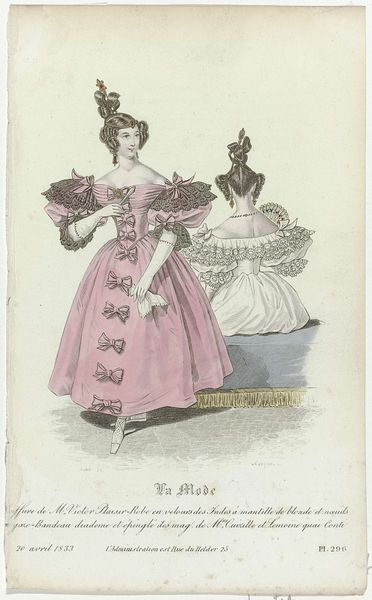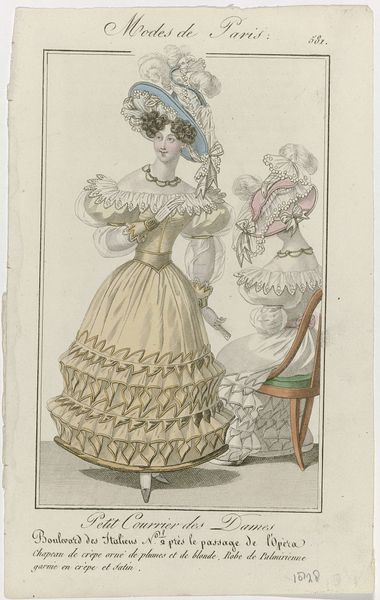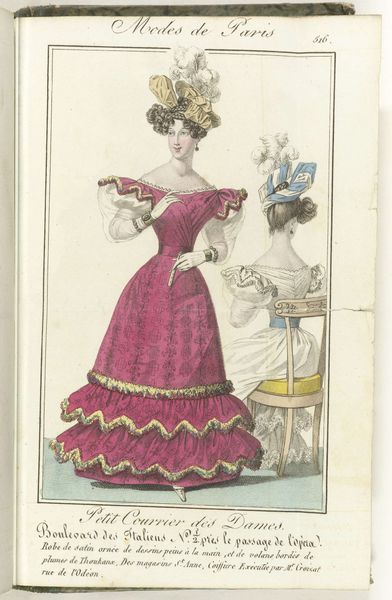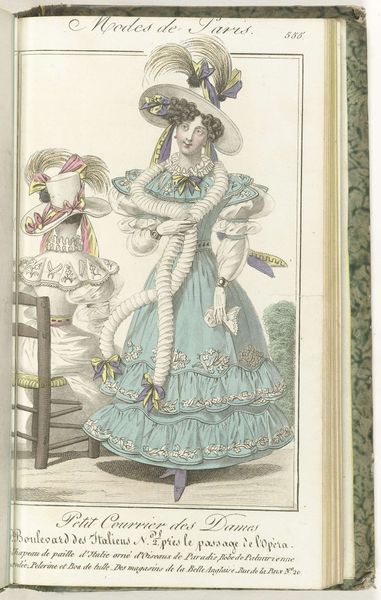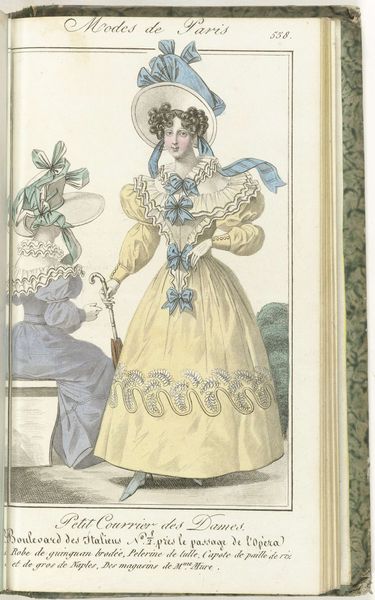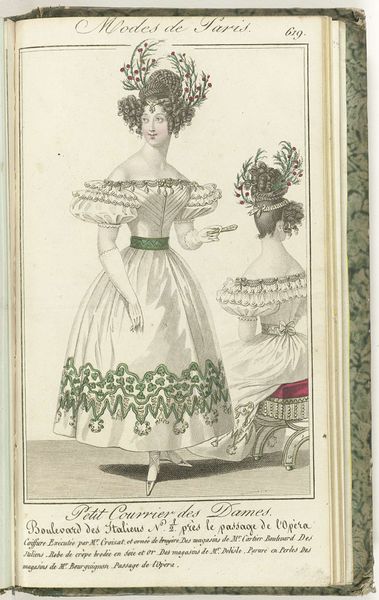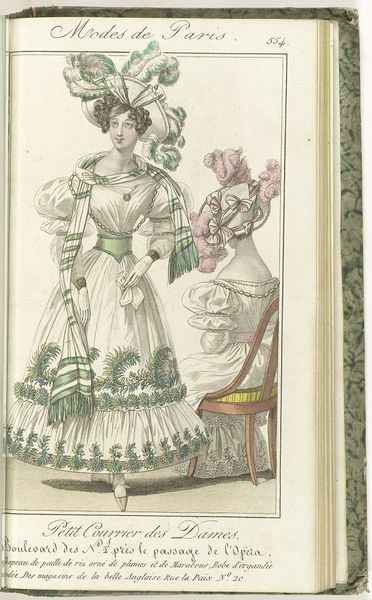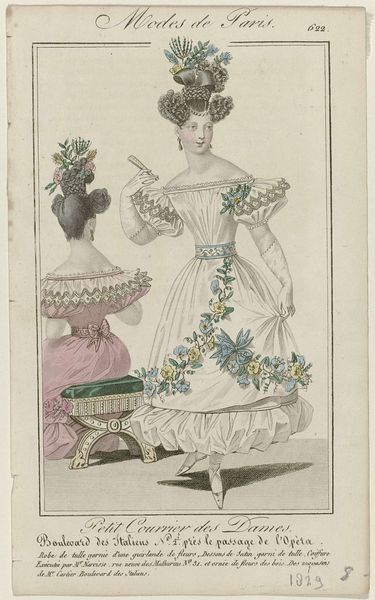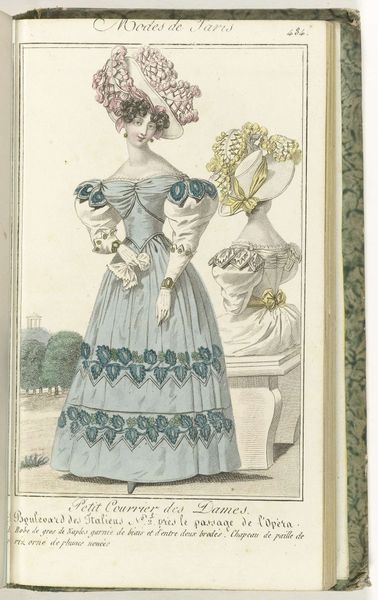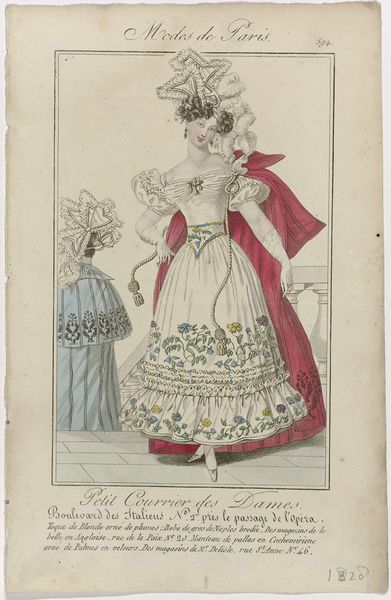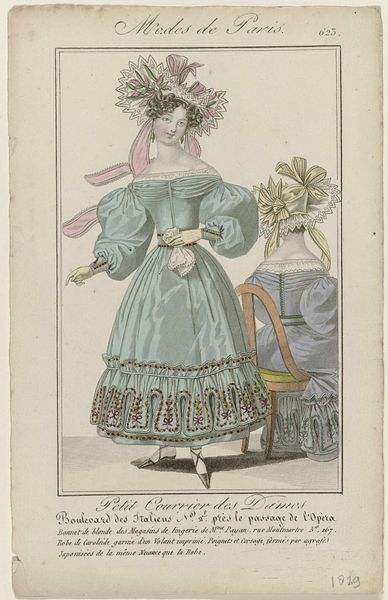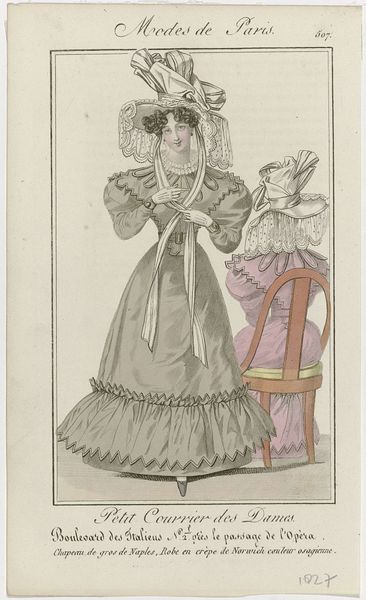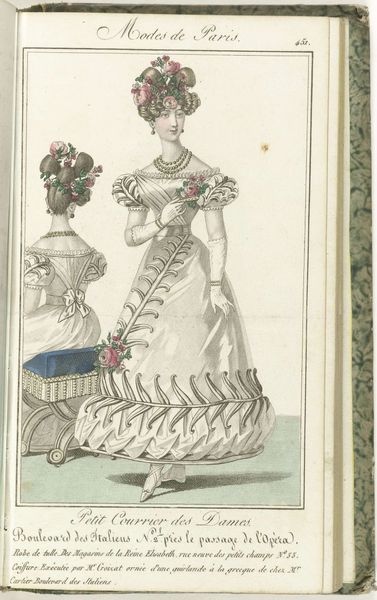
Petit Courrier des Dames, 25 avril 1828, No. 549 : Costume de Mariée... 1828
0:00
0:00
anonymous
Rijksmuseum
drawing, print, etching, paper, engraving
#
portrait
#
drawing
# print
#
etching
#
paper
#
romanticism
#
genre-painting
#
engraving
Dimensions: height 201 mm, width 129 mm
Copyright: Rijks Museum: Open Domain
Curator: Take a look at this fascinating print: “Petit Courrier des Dames, 25 avril 1828, No. 549: Costume de Mariée…” It is an etching and engraving on paper and currently held at the Rijksmuseum. Editor: Intricate! The fine lines create a delicate, almost ethereal feel. The frills upon frills convey the opulence of the dress itself. Curator: Absolutely, the technique demonstrates a high degree of craftsmanship, reflecting the period's emphasis on elaborate fashion. Note the details in the costume's construction, indicative of textile production at the time. The method itself mirrors modes of reproduction and circulation of fashion through printed media. Editor: Speaking of details, consider the visual hierarchy! The focus is undoubtedly on the bride. The verticality emphasizes her height. The artist even gives volume to her dress. But even more, it presents the viewer with ideal, feminine beauty and fashionable status during the Romantic era. Curator: Beyond aesthetics, consider the social context. "Petit Courrier des Dames" served as a means of disseminating fashion trends, directly impacting dressmakers, retailers, and consumers. Such prints played a vital role in shaping demand. Editor: Yet, visually, it's intriguing how the soft pastel palette enhances the Romantic sentimentality and gentle elegance overall. This reflects specific visual preferences that align with the movement's aesthetics and its desire for harmony and balance. Curator: Certainly, though let's consider further how the material reality and reproduction influenced consumer behavior during the 19th century. Fashion wasn't just aesthetic—it was intrinsically linked to economies, trades, and gendered labor. Editor: A fine perspective. Still, the artist is showcasing something beyond social phenomena; rather they communicate universal beauty through meticulous visual form. It seems more oriented towards aesthetic idealism. Curator: I see it also in terms of commodity production; but in tandem, analyzing this print and considering Romanticism reveals deeper insights into both its materials and societal significance. Editor: Perhaps both are correct.
Comments
No comments
Be the first to comment and join the conversation on the ultimate creative platform.
